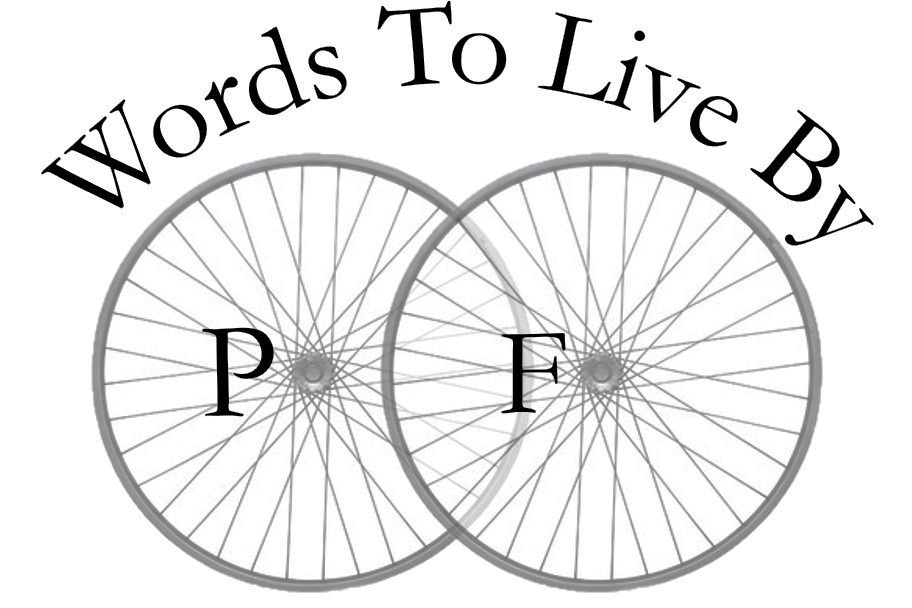Stupid questions
Let us consider style.
Whatever the self-evident merits of a duly earned style-over-substance critique, it does not qualify as a universal truth. Style *instead* of substance? Sure, that’s a bad thing, always. But once a minimum substantive level is attained the general rule is, in fact, for substance to increase at least in lockstep with style and often as a leading-factor indicator. It goes the other way, too. Once we’re talking about a base level of substance, of merit, style only goes up in tandem with function until there is a negative correlation with less style and more substance at the high end where the law of diminishing return kicks into a negative ratio.
It is at the margins where the failure piles up. Zero substance equals zero style. Top function often travels the edge of the envelope with backward progress on style points. This is where we find ourselves now with the highest end bicycle componentry and the most advanced materials. At the far reaches of the universe light begins to bend and time warps and woofs. So you have cranks that resemble nothing so much as single-piece forged-iron cranks off a Wal-mart Huffy in 1988, the rings like tin pie plates. It’s getting uglier and slogging it off on high-performance. Campy, too, of course. It’s not immune, only more stark in its failure.
They don’t make a Gore-Tex Burberry coat. (Maybe they do? I see no immediate Google-search evidence they do, but it seems quite reasonable they might. Point being, it’s not going to be as cool as the Burberry in that picture of Calvin Trillin and his wife on a London sidewalk in the 1960s.)
Campagnolo at its best is art by way of design in service to engineering. This is so through different iterations, different eras. The cycle repeats. At the moment it has been lost and engineering is understood as design, no matter how it looks or feels. Something is squandered.
Consider first an example that isn’t on the bicycle at all, the documentation that comes with the components. It’s paperwork, really. The instructions. Who reads the instructions? Well, the 2017 version of me does. I’m almost certain the 1995 version of me did not.
The design of these documents tells the tale. The 21-year-old user manuals are designed. The modern version is typeset. The 1995 manual is sweet in its faulting, slightly off translation into English by what one imagines to be an earnest Italian grandmother. This decade’s attempt is just as pidgin, but then it’s been given for any last-minute edits to your uncle, your dad’s youngest brother who was always spoiled by your grandma and graduated law school to become a personal injury attorney.
The result features phrases so familiar in our era, but 100 percent absent in a time not so long ago.
Can anyone legitimately argue a single lawsuit has ever been forestalled, avoided or settled by the language about to be cited? If so, it would be the first to make such a claim, and certainly the only one who did so would be the only one?
WARNING!
The adjustments of the lower and upper end stroke of the rear derailleur are carried out by specialized personnel.
An inaccurately adjusted rear derailleur may cause malfunction and dangerous situations which could cause accidents, personal injury or death.
I’ve looked. Nowhere, in all the literature from the Campagnolo Athena groupset from 1994, is the word death used. I look upon this absence favorably. Death is a subject antithetical to joy, the chief byproduct of bicycle riding.
It goes far beyond words. The ’94 group is represented in its constituent parts by simple abstra-conic designs. They are, and there is no other word for it, beautiful. The manuals these days are on newsprint without any graphic design, elegantly simple or no.
Because looking excruciatingly stylish is no longer a primary attribute of bicycle parts, or Campagnolo parts. The group I purchased from Colorado Cyclist came with a crankset quite ugly. Four arms to the chain ring spindle, spread wide. There is no arched filigreed finery. I suppose it’s lighter. I suppose it’s stiffer, whatever that means. I suppose it’s stronger.
I know it’s uglier.
I sent the ugly cranks back. I ordered up the cranks from the year’s previous iteration (from Britain – the Internet is a wonderful thing), utterly compatible with the other parts of the 11-speed drivetrain while retaining something significant of the arcs and arms and bolt pattern of a more classic form. This substitution came at a significant reduction in cost (Brexit is a wonderful thing) and, I would say, a sizable increase in both performance and cool. Only time will tell on the former. The latter is demonstrably true.
Just look.
Contrary to popular poppycock, there is such a thing as a stupid question. I’ve long and vehemently insisted this is so. There are all kinds of stupid questions. I’ve heard a bunch of them and asked a goodly number myself. There are also bad ideas. In addition, there sometimes is harm in asking. Finally, there is only one right answer to this question.
The outdated version has an axle of titanium, it’s a Campy Super Record, the carbon layup is engagingly marbled – I don’t know how much of this is enhanced or designed in and how much is happenstance. Whichever way, the swirls, finish and depth of the material is superior. (In practice – and, spoiler alert, I’ve now finished putting Hugo Black together and am actively riding it around North Florida and South Georgia while I finish writing about the experience of fitting pieces and adjusting mechanics. It’s incredible how these chain rings and cranks do in action.) I can’t speak to how the newer-fangled Chorus cranks and bottom bracket would have performed. They could not possibly be better.
There is only one answer. Let’s go for a ride.



